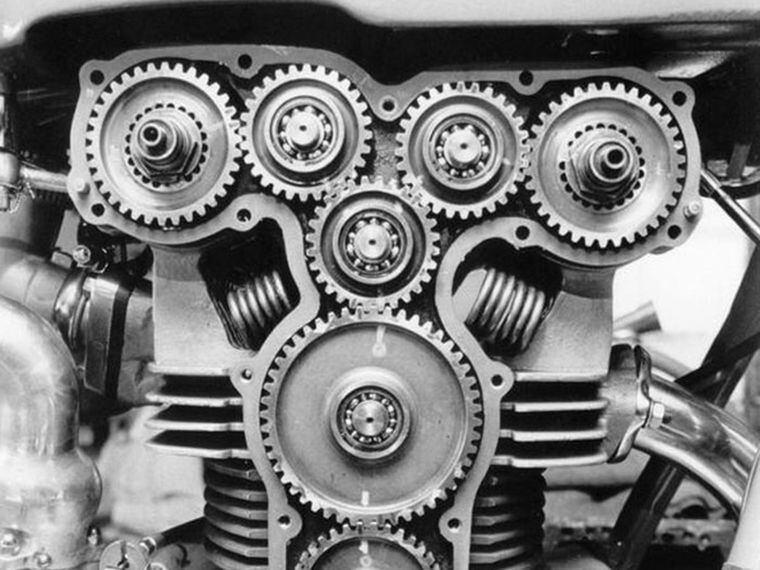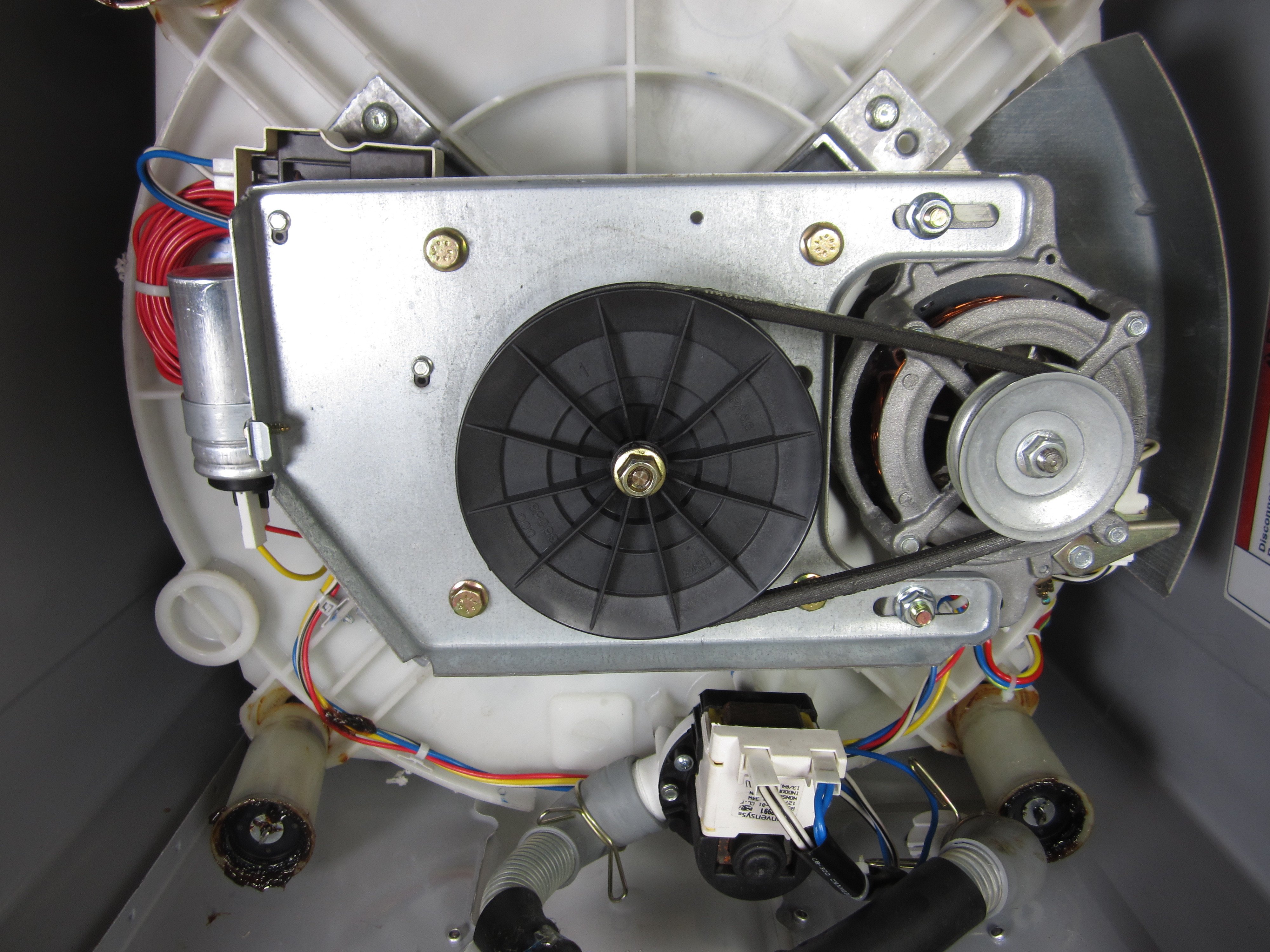Power Transmission
Table of Contents
What is Power Transmission?
Mechanical power transmission refers to the transfer of energy from a generation source to the location where useful work using simple machines, linkages, and mechanical power transmission elements is performed. Many machines contain some system of power/motion transmission that operate with a provided input (fuel) [1]. Power transmission systems provide speed, torque, and/or direction of rotation conversion from a power source to another device [2]. The importance of power transmission is the ability to transfer energy and provide work in different amounts of space with some cost to efficiency. It can also be noted that power transmission systems can alter the work output (think changes in rotation speed and torque) [1].
Mechanical power transmission elements can be classified into numerous types which include: shaft couplings, power screws, gears and gear trains, brakes and clutches, belts and pulleys, and chains and sprockets [1]. These elements can be seen everywhere, from industrial applications to day to day life. One of the most common examples would be in an automobile, where the wheels are propelled by the engine [2]. The mechanical power generated by the engine is transferred to the wheels through a transmission system. Bicycles are also a very common example of the application of a mechanical power transmission system. A common industrial example would be a conveyor belt.
Power Transmission Components
Types of Gears
Types of Belts
Types of Pulleys
Types of Shafts
Types of Bearings
Power Transmission Systems
Gear Drives
Gear drives are the most widespread form of mechanical transmission [4]. Gear drives are defined as the transmission of motion or torque from one shaft to another by means of direct contact between toothed wheels (gears) [5]. The main advantages of gear drives are: their compact structure, which makes them suitable for short range transmission; high efficiency, as well lubricated drives only have an efficiency loss of 1-2 percent; lack of slippage; and a high reliability and long life [5]. The shortcomings of gear drives are that they are not suitable for transmission between two axes at a long distance. Furthermore, they require a high level of precision in manufacture and installation, resulting in higher costs. It should be noted that gear drives are incredibly versatile, as they can be found in, both, small scale and large scale applications.
Torque (τ) and rotational speed (ω) are inversely proportional due to the relation of P=τω. So when rotational speed decreases, the output torque increases and vice versa. In a gear drive, the transmission of power through the gears will change with the gear ratios. This ratio is the ratio of the pitch diameter, the circle from where the teeth of a gear makes contact with other teeth [6]. Gearing down means transmitting power from a larger gear to a smaller gear reduces speed and increases torque, gearing up does the opposite. Since motors are fast by nature, most applications will gear down. Gear drive efficiency varies from different gear shapes and the relative sizes of two mating gears as well as tooth shape and contact angle [6]. Consideration is necessary when designing a gear drive. Stress calculations to determine the right gear size, width and the right tooth size will be required to ensure an appropriate lifetime.
An example of a gear drive found in a motorcycle engine [7]. |
|---|
Belt Drives
Belt drives are a form of mechanical transmission which utilizes a flexible belt that is tensioned on a pulley for motion or power transmission [4]. Belts are a simple, effective and cheap way of transmitting power but is a less efficient than other common power transmission devices. The flexibility of the belt gives the system some tolerance to impact and vibration which can help prevent damage. If there is an overload, the belt can slip off to avoid breaking the machine. The belt is a very versatile way of routing power between two points with tensioning necessary at the input and output pulleys. This is often achieved by having one of the pulleys on a slot or some tightening mechanism so it can pull the belt taut into position. In many custom use cases, using common sizes found on the market might not be taut without designing a potential inefficient route for the belt. Instead, using tensioning guide wheels can get a taut fit to taut transfer power. Since the belt is not perfectly fixed and can vary in tension and in slip conditions, it is not guaranteed to get a fixed gear ratio. This inaccuracy makes the belt drive more inefficient and the diameter ratio is often larger (than a gear drive), resulting in a larger outer dimension. Belts have a relatively short service life compared to other transmission systems due to the wear and tear on the softer belt material.
A very common application of belt drives can be seen in washing machines as well as drill presses. In the workshop, many drill presses vary speed by opening up the drill press and moving the belt between different sizes of pulleys.
| An example of a belt drive found within a washing machine [8]. |
|---|
Chain Drives
Chain drives, or chain and sprockets, are a form of mechanical power transmission that are widely used in cases where shafts are separated at distances greater than that for which gears are practical [8]. They generally work by using a drive chain (also known as roller chain and transmission chain) to connect a pair of sprocket gears. The teeth of the sprockets need to mesh into the holes of the chain links so mechanical force can be transferred from one sprocket to the chain to the other sprocket. Due to the meshing, chain drives do not slip like belt drives and therefore have a high performance with up to 97% efficiency. They are also more rugged than belt drives, being able to endure harsher environments with lower tension with lower load on shafts [9]. Unfortunately, they can only transfer mechanical power between two parallel shafts and they had higher cost and installation difficulty than belts. Since there are mating components, they need to be lubricated and can't be used when slip is necessary. They are considerably noisy and can cause vibrations [10].
Some examples of chain drives can be seen used on bicycles with different sprocket diameters to change gear and effect the speed and torque outputs. They're used in many other places such as driving escalators and conveyor belts.
Diagram of a chain drive found in a bicycle [3]. |
|---|
Shaft Drives
Shaft drives are a form of mechanical power transmission that uses a drive shaft, which is a mechanical component which is primarily used to transfer torque between components separated by a distance in a slim profile [11]. Since the shaft drive's method of power delivery contains a low quantity of parts, a single shaft and some bevel gears, it has good longevity since they are durable, has low maintenance, unlikely to jam and performs consistently. The build of a shaft drive is smaller than other power transmission methods to transfer the same amount of power. However, since they often rely on bevel gears and weigh considerably more, they are not as efficient as other power transmission systems; reaching a peak efficiency of 95%. Since their design is complex, they are more expensive.
Shaft drives are most often used in vehicle drive trains. In a standard ICE (internal combustion engine) car, there is a drive train that moves the car body. This rear wheel drive train contains the engine, transmission, clutch, drive shaft, differential with drive axles (smaller drive shafts). The engine provides power which goes through a series of gearing in the transmission to change the output torque and speed. when the clutch is engaged. The output is then delivered through the drive shaft to the differential that sends proportional power to the rear wheels. The differential is a vital mechanism that allows the rear tires to spin at different rates (hence the name differential) incase the tires are on different surfaces or experience different forces [12].
Example of a drive train [13]. |
|---|
Contributors:
| User | Last Update |
|---|---|
| Former user (Deleted) | 1338 days ago |
| Former user (Deleted) | 1409 days ago |
| Former user (Deleted) | 1410 days ago |
| Former user (Deleted) | 1410 days ago |
| Former user (Deleted) | 1457 days ago |
Faculty Advisor: Chris Rennick and Michael Lenover (alumni)



